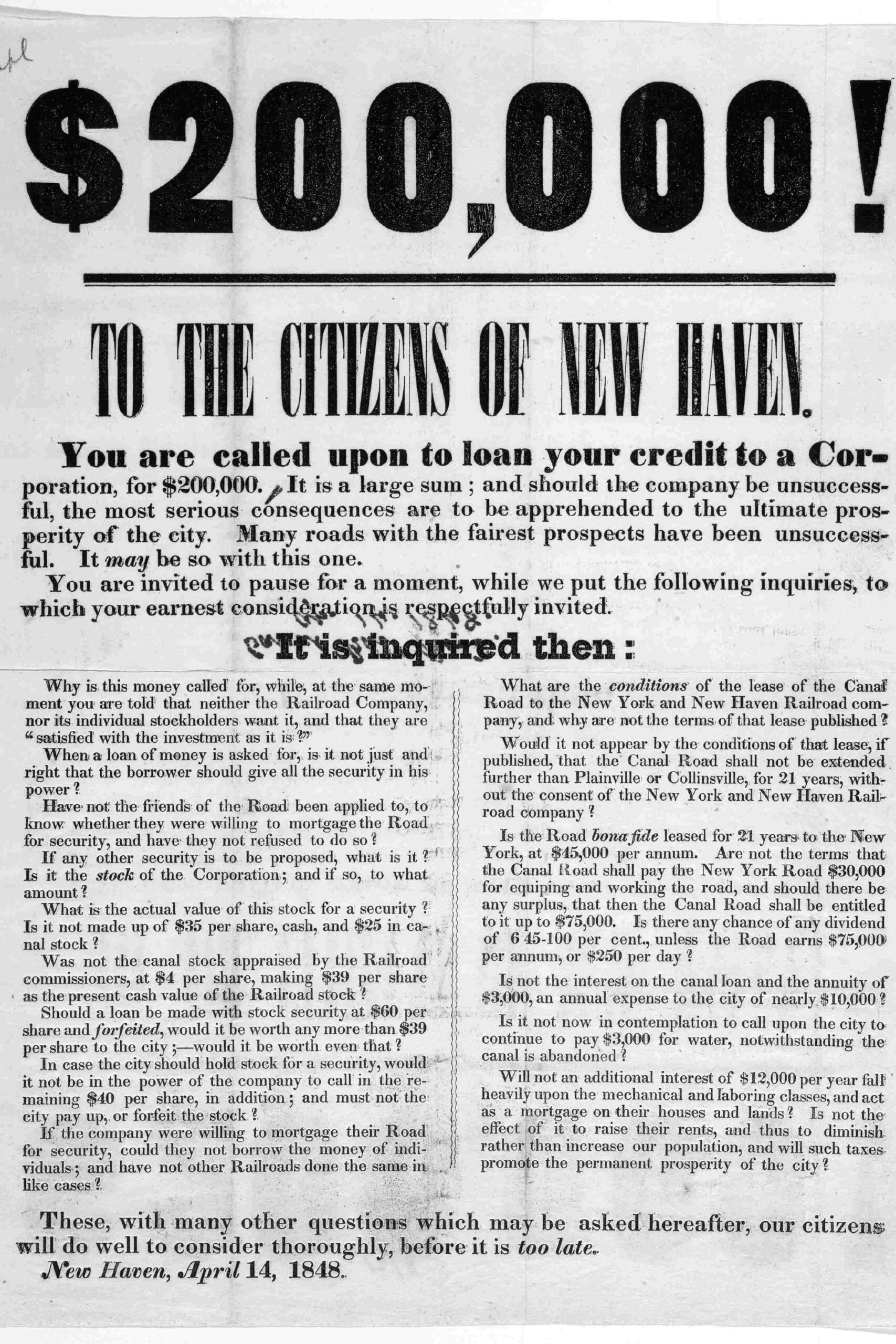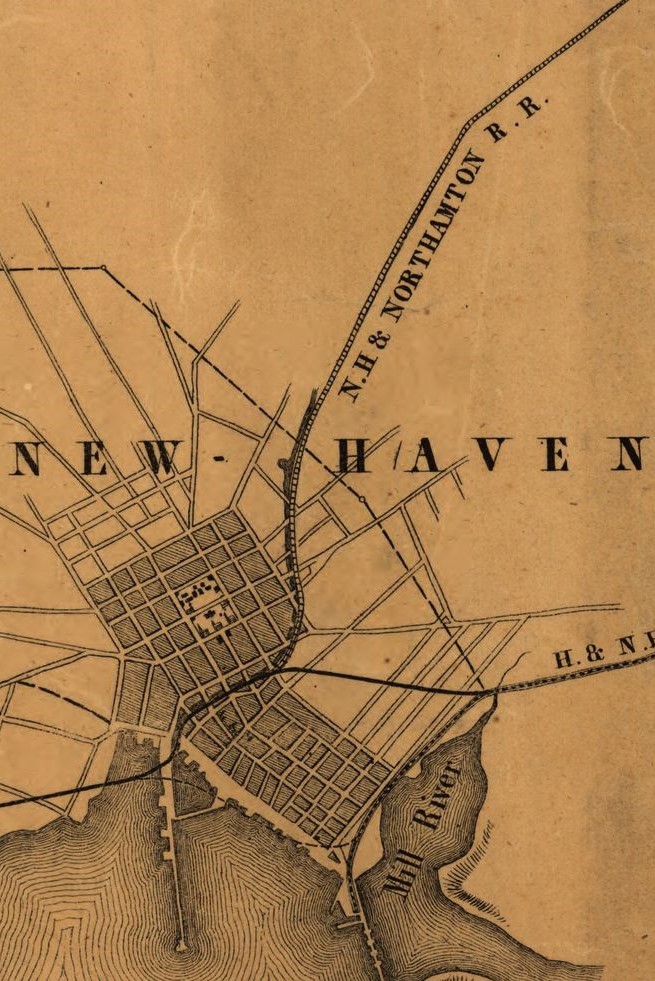From Canal to Railroad (1848)
Although some merchants did a booming business up and down the Farmington Canal, the canal’s operators were less successful. They had taken out large loans to pay for the construction of the canal, and the annual income from tolls was often less than the cost of maintaining and repairing the embankments, locks, aqueducts, and bridges that were all needed for the canal to function. What’s more, the canal was not navigable during drought, rainstorms, or other poor weather conditions -- and for four months during the winter the water froze over and became impassable, except by the local children on their ice skates.
As luck would have it, someone was in the market for a linear, relatively flat piece of land that connected Connecticut to Massachusetts: the New Haven and Northampton Railroad Company. A survey was commissioned, and the company’s first railroad tracks were laid, first on the towpath and later on the canal bed itself. The 1847 season was the Farmington Canal’s last: it shut down in January 1848, and the children got one last chance to skate down the frozen water that winter before the new railroad took the place of the old canal.


The railroad was built by the New Haven and Northampton company, and was funded by many of the same investors who had previously funded the canal. The rail line would later link to Boston via a connection in Springfield, Massachusetts, and to New York via New Haven. It was ultimately acquired by the New York, New Haven, and Hartford Railroad, and parts of it would remain in use all the way through to the 1980s.